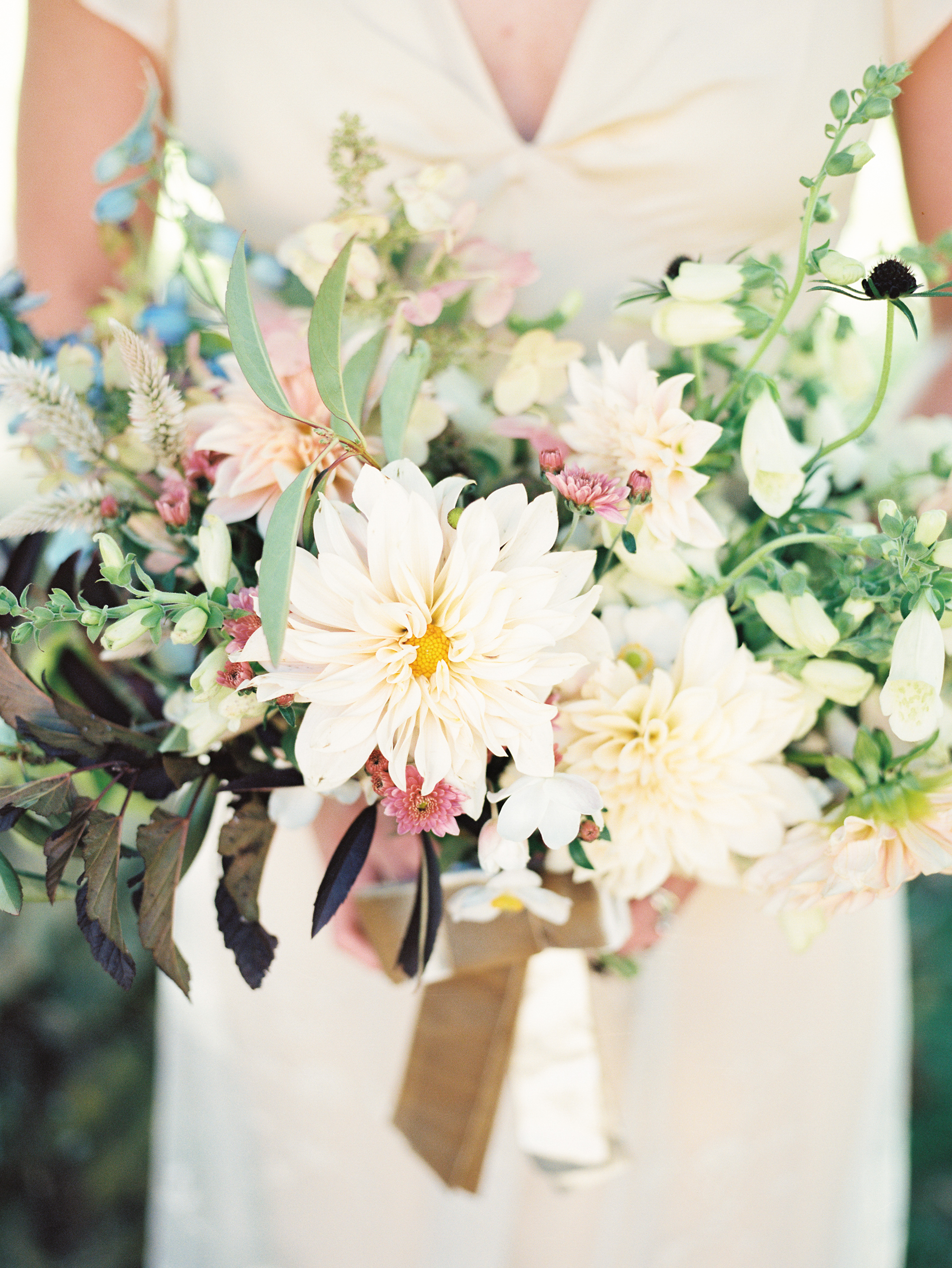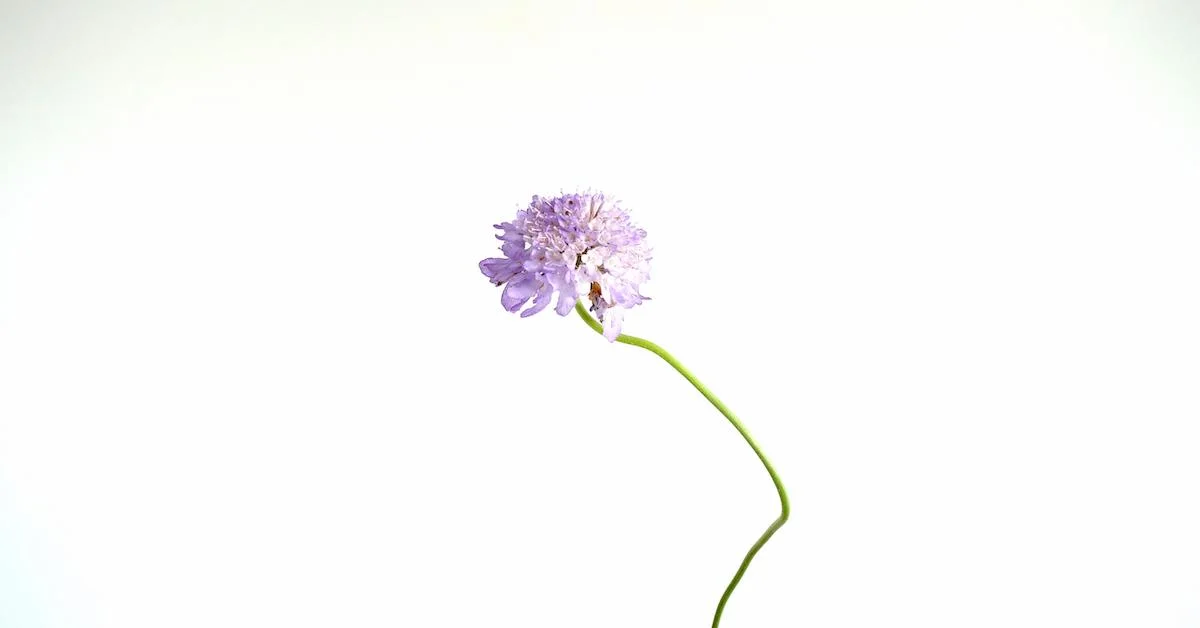Flower Growing and Floral Design Hacks
As we live life day by day, we learn things that make our lives easier—like placing your phone in rice after you've accidentally dropped it in the toilet or using a wooden spoon on a pot to keep the water from boiling over. As flower people, we have to learn shortcuts to make our jobs more efficient. Every minute is valuable! Team Flower members are full of floral design hacks and flower growing hacks for a simpler flower life. Take a look below. Perhaps a few of them will make your life easier!
Heather Payne Photo
Keep It Clean
If you don't want pampas grass to shed, you can spray it with cheap hairspray. — Stacey Deutsch of @staceyspetalsandstems
To remove eucalyptus, rub a teaspoon of sugar and a tablespoon of olive oil onto your hands. Add soap after removing eucalyptus. Homemade sugar scrub and some deep moisturizing after a long day of flower processing. — Myca Sturtevant of @_whirlygirl
You can use Cedarwood Essential Oil to get eucalyptus off your hands! — Lisa Schmitz of @wherepigsflyandsuch
To clean glassware, boil a giant pot of water, hold the glass over the pot and let the glass fog up, then immediately wipe down with a cloth. — Jessica Hamilton of @fibersandflorals
Use Dawn dishwashing detergent to get lily pollen off of clothing. Pretreat it before you put it in the washing machine, and it will come out sparkling clean. — Muffy Sander of @sanderranchflowers
Butter is an unassuming way to remove sap from Christmas greens off your hands. I always have a stick handy in the flower cooler. — Nicole Caduff of @hersheyflorist
As you use crowning glory, you will need to periodically soak the spray trigger from the bottle in hot water as it gets gunked-up after a while — Tiffany Landuyt of @studiobloomiowa
It's very easy to avoid wax coating a votive or hurricane by spraying the inside of your votives with a light mist of water. It creates a barrier, and the wax literally falls out afterward. MAGIC! — Kelly Perry of @teamflower
When using cold glue, I use tweezers to prevent any glue mishaps. — Jessica Hamilton of @fibersandflorals
Design Tips
For designing flowers on a cake, give them a wash and use a straw or wrap to keep them from actually touching the food. Visit this site to discover which flowers are poisonous. — Kelly Perry of @teamflower
When working with Gerbera, use quick dip and run a wire up the stem. For bouquets, I like the small mini gerbs paired with other flowers. — Rebecca Camenisch of @rebeccassilverrose
[When designing with smilax], keep the smilax in the shipping container until ready to use. They pack it tightly & it would be a challenge to get it back together. Also, you may want to have someone unwind and sort the smilax bale on the ground to pass it to the folks that are attaching to the tent. — Jennifer Kosinski of @allabloomflowerfarm
If you are losing your snips, try tying a bright ribbon on each pair. The ribbon will stand out, and you will be able to find them when you have laid them down in your floral mess. — Rickie of @backdoor_garden
Crowning Glory might be a stronger moisture sealant than Finishing Touch. Finishing Touch is more for arrangements that you still want flowers to open, etc. Crowning Glory for corsages, boutonnieres, etc. that you want to stay "as is." — Ranee Nash of @flowersbyranee
[When making a garland], I just wire greens together and then measure as I think I'm getting close to length. Although, a precut rope piece would probably eliminate that extra step for me. I take a bundle of greens and then 2–3 wraps of paddle wire and trim stems (not super short but definitely eliminate some bulk). Then repeat. I will pop in floral accents on site last or pop in water tubes. I really don't have a recipe—it depends on what greens I'm using. Eucalyptus, ruscus, huckleberry, bay leaf (really like this), eleagnus (another fave). — Leslie Wacker of @southernstems
[Daffodils] hold up okay out of water for an event. They would need to be treated with warm water and changed to new water before adding them to any other flowers. The sap is somewhat toxic to other flowers, but generally not a problem if conditioned separately first. — Susan Wright of @sggarden
I painted Monstera leaves blush with Design Masters Color Tool. Just make sure the leaves are dry and give plenty of time for the paint to dry. — Hannah Hunt of @goldenthistledesign
Marcie Meredith Photography
Growing Hacks
[Regarding amending soil], first and foremost, before doing anything get a soil test. All land-grant universities will be able to help with that. Then, if you don't know how to decipher what it says, ask your local extension agent. — Jill Mullaney of @platinumpetalsfloral
[When growing for market, you need] filler and foliage, foliage and filler. Did I mention foliage or fillers? Think TEXTURE: if you have money to invest, spend it in woody crops and fast-growing foliages. Try bare-root planted in late winter/early early spring which will free up your main growing season for production of annuals and or perennials—MINT, Wild Marjoram, Basil. — Andrea Gagnon of @lynnvalestudios
A lot of growers who can't grow perennial lupine because of soil or climate do well with annual lupine "Sunrise.' It's a great crop for spring hoop house growing, but also can work outside in early spring. — Becky Devlin of @foxgloveandfigblog
At the end of the day, successful flower growing comes down to healthy, great soil. Compost is a major element in creating great soil, but I would caution against planting seedlings directly in it. By nature, compost is crumbly and loose, and while this is perfect for improving your soil, it isn't good for the tiny new roots. They will grow into air pockets and die. Also, it is very hard to keep the compost from drying out, again causing major problems for seedlings. Ideally, you will work the compost into your soil before planting, creating a crumbly, moisture retaining (but draining) medium. — Kathleen Murphy of @primrosehillflowerco
I shoot for about 6" spacing between sunflowers. The Vincent Series has thinner stems. They are a very classic sunflower coming in orange with dark centers (Vincent's Choice) and yellow with green centers (Vincent's Fresh). Are you pinching the branching varieties? That will also give you more stems that are longer and thinner. — Jessica Weatherford of @scenicblooms
I would not grow Ranunculus or anemone without cover, but you can do them just in Caterpillar or low tunnels before you get your big tunnel. Tulips daffodils and snaps do not need a hoop. I would fall plant snaps and then again late winter early spring. — Linda Doan of @auntwillieswildflowers
For my dahlias, I rigged up a small shade structure over one row last year, and honestly, there was no difference. Mulch, fish fertilizer, and correct watering made the difference. In terms of storage, I use old soda coolers from grocery stores but am working on building a "cold box." I always store upright in water; condensation can rot/brown/damage the delicate petals just like a hydrangea. — Jalisca Thomason of @rusticrootsfloraldesign
[When designing for an event or client, consider] "selling" your farm flowers to the design part of your business. Then you could mark them up as a designer typically would and go from there. You are essentially running two businesses, and both have to be profitable. — Kelly Perry of @teamflower









